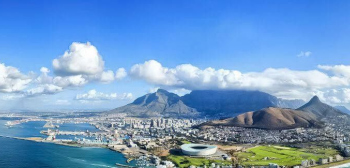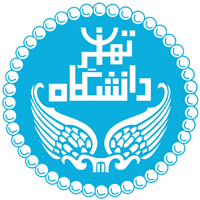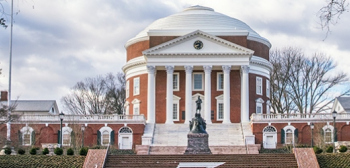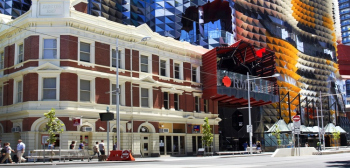- #322 QS Global World Ranking
- PublicStatus
- Very HighResearch Output
- 48,895Total Students
- 1,890Faculty
- 1,018Int'l Students
The University’s position in the current QS World University Rankings.
Whether the University is funded by the government of that country or state, or funded by private donations.
The research intensity of the University, based on the number of papers output relative to the University’s size.
The number of full time equivalent students enrolled at the University.
The number of full time equivalent teaching staff employed by the University.
The number of full time equivalent international students enrolled at the University.
University of Tehran
About
As the University of Tehran is the symbol of higher education of Iran, the main gate of the University in central Tehran, with its specific design and architecture is in a more general sense, a logo of education in Iran.
- History
- Present Status
- Orientations
- University Ranking in statistics
- Main Events
- Libraries and Publication Center
- Cultural and Academic Activities
- Office of International Relations (Vice-President, International)
- Guest House
- Contact Info. History
Rooted in Jondi Shapur University which goes back over 2,000 years, the University of Tehran in its traditional form was established seven centuries ago. It was founded firstly in religious seminaries (“Houza” or traditional religious schools). Other than religious studies, the education then covered mathematics, astronomy, medicine, literature, biology, physics and chemistry. During the modern era, the University of Tehran evolved from a religious structure to a more modern and academic structure of higher education. Dar-ol-Fonoon College was the first engineering school in its modern form which was established almost a century ago.
This was 20 years before the establishment of similar colleges in Tokyo (Japan). Amir Kabir, the Prime Minster of Iran during the Qajar dynasty (1848-1851), having witnessed the modern sciences during his journey to Russia and the Ottoman Empire, established Dar-ol-Fonoon College. Engineering, medical and industrial sciences were among the programs taught at the College. The first instructors of the College were seven professors from Austria. Dar-ol-Fonoon was turned into an official state-run university, the first dean of which was the foreign minister of the time, Mirza Mohammad Ali Khan.
The initial plan of turning the College into a national university was ordered by Abdol-Hossein Teimoortash, Minister of the Court of the time to Doctor Isa Sedigh. The plan was ratified by the king, Reza shah. The plan would establish faculties of Theology (Ma’ghool-o-Manghool), Natural, Economics and Engineering Sciences. The Minister of Science at the time, also in charge of implementation of the plan was Ali Asghar Hekmat, whose collections of books are kept at the University’s main library. Other teacher training colleges and Industrial schools became subdivisions of the University to which ad hoc schools and institutions would be added. It was not until 1933 that the plan was passed by the National Parliament. Due to the absence of large buildings, the mansion of the Teachers Training College for example was adopted for the Faculty of Humanities and Literature.
The University of Tehran was inaugurated in the winter of 1934. Ali Asghar Hekmat, the Minister of Science, became the first Dean of the University. The University Council was constituted of several prominent faculty members including Loghman-o-doleh and Dr. Amir A’lam from Medicine; Dehkhoda and Sedig Hazrat (Mohammad Mazaher) from Law; Sedigh A’lam and Mirza Gholam-Hossein Khan Rahnama and Dr. Siasi from Literature and Humanities; Haj. Seyed Nasrollah Naghavi and Badi-o-zaman from Ma’ghool –o- Manghool; and Dr Hesabi and Amin from the Faculty of Engineering. Also, Dr. Vali-o-llah Khan Nasr was added by the Science Ministry due to his contributions to the University. Present Status
The academic staff of the University consists of 1,650 full-time faculty members and several hundred part-time and adjunct professors and affiliated members. The University of Tehran has a broad range of international adjunct faculty members. The University also employs 3,000 personnel who work at the different offices, institutes and centers.
The University has 19,000 undergraduate and 13,000 graduate students. The University has 6 colleges with a total of 39 faculties and 120 departments at its 7 campuses located in the cities of Tehran, Qom and Karaj as well as its Kish International Campus (in Kish Island). The University of Tehran, as the main research University of the Country, offers more than 300 post graduate programs.
Fifteen percent of the country’s Centers of Excellence, as recognized by the government, are located at the University of Tehran, which along with more than 40 research centers ensure UT’s commitment to research. Together, over 3,500 laboratories are active in these centers and in the faculties. In addition, the University of Tehran publishes more than 50 scientific journals, some of which have the ISI index....
About
As the University of Tehran is the symbol of higher education of Iran, the main gate of the University in central Tehran, with its specific design and architecture is in a more general sense, a logo of education in Iran.
- History
- Present Status
- Orientations
- University Ranking in statistics
- Main Events
- Libraries and Publication Center
- Cultural and Academic Activities
- Office of International Relations (Vice-President, International)
- Guest House
- Contact Info. History
Rooted in Jondi Shapur University which goes back over 2,000 years, the University of Tehran in its traditional form was established seven centuries ago. It was founded firstly in religious seminaries (“Houza” or traditional religious schools). Other than religious studies, the education then covered mathematics, astronomy, medicine, literature, biology, physics and chemistry. During the modern era, the University of Tehran evolved from a religious structure to a more modern and academic structure of higher education. Dar-ol-Fonoon College was the first engineering school in its modern form which was established almost a century ago.
This was 20 years before the establishment of similar colleges in Tokyo (Japan). Amir Kabir, the Prime Minster of Iran during the Qajar dynasty (1848-1851), having witnessed the modern sciences during his journey to Russia and the Ottoman Empire, established Dar-ol-Fonoon College. Engineering, medical and industrial sciences were among the programs taught at the College. The first instructors of the College were seven professors from Austria. Dar-ol-Fonoon was turned into an official state-run university, the first dean of which was the foreign minister of the time, Mirza Mohammad Ali Khan.
The initial plan of turning the College into a national university was ordered by Abdol-Hossein Teimoortash, Minister of the Court of the time to Doctor Isa Sedigh. The plan was ratified by the king, Reza shah. The plan would establish faculties of Theology (Ma’ghool-o-Manghool), Natural, Economics and Engineering Sciences. The Minister of Science at the time, also in charge of implementation of the plan was Ali Asghar Hekmat, whose collections of books are kept at the University’s main library. Other teacher training colleges and Industrial schools became subdivisions of the University to which ad hoc schools and institutions would be added. It was not until 1933 that the plan was passed by the National Parliament. Due to the absence of large buildings, the mansion of the Teachers Training College for example was adopted for the Faculty of Humanities and Literature.
The University of Tehran was inaugurated in the winter of 1934. Ali Asghar Hekmat, the Minister of Science, became the first Dean of the University. The University Council was constituted of several prominent faculty members including Loghman-o-doleh and Dr. Amir A’lam from Medicine; Dehkhoda and Sedig Hazrat (Mohammad Mazaher) from Law; Sedigh A’lam and Mirza Gholam-Hossein Khan Rahnama and Dr. Siasi from Literature and Humanities; Haj. Seyed Nasrollah Naghavi and Badi-o-zaman from Ma’ghool –o- Manghool; and Dr Hesabi and Amin from the Faculty of Engineering. Also, Dr. Vali-o-llah Khan Nasr was added by the Science Ministry due to his contributions to the University. Present Status
The academic staff of the University consists of 1,650 full-time faculty members and several hundred part-time and adjunct professors and affiliated members. The University of Tehran has a broad range of international adjunct faculty members. The University also employs 3,000 personnel who work at the different offices, institutes and centers.
The University has 19,000 undergraduate and 13,000 graduate students. The University has 6 colleges with a total of 39 faculties and 120 departments at its 7 campuses located in the cities of Tehran, Qom and Karaj as well as its Kish International Campus (in Kish Island). The University of Tehran, as the main research University of the Country, offers more than 300 post graduate programs.
Fifteen percent of the country’s Centers of Excellence, as recognized by the government, are located at the University of Tehran, which along with more than 40 research centers ensure UT’s commitment to research. Together, over 3,500 laboratories are active in these centers and in the faculties. In addition, the University of Tehran publishes more than 50 scientific journals, some of which have the ISI index....
University highlights
- 2012#551- 600
- 2014#601-650
- 2015#651-700
- 2016#551-600
- 2017#551-600
- 2018#601-650
- 2019#701-750
- 2020#601-650
- 2021#591-600
- 2022#521-530
- 2023#501-510
- 2024#=360
- 2025#=368
- 2026#322
Campus locations
16 Azar Street, Enghelab Ave, Tehran, IR,
16 Azar Street , Tehran , Iran , 14174
Similar Universities
Universitat Politècnica de València
Camino de Vera, s/n, València
=336 QS World University Rankings 5 QS starsESCP Business School - Berlin
Heubnerweg 8-10, Berlin
K.Zhubanov Aktobe Regional University
A.Moldagulova Prospect, 34, Aktobe
McIntire School of Commerce
125 Ruppel Drive, Virginia
Macromedia University of Applied Sciences
Mehringdamm 33, Berlin
Dhofar University
P.O.Box: 2509, P.C 211,, Salalah
RMIT University
RMIT University, 124 La Trobe Street, Melbourne
238 QS World University Rankings 5+ QS starsRelated content

Top Civil Engineering School…

Top Universities in Africa a…
Test preparations
Featured University


-
10 UG & 47 PGTotal courses
-
Private for ProfitStatus
-
HighResearch output
















